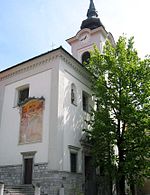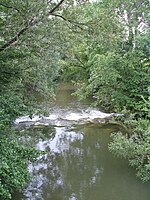Ljubljana Botanical Garden

The Ljubljana Botanical Garden (Slovene: Ljubljanski botanični vrt), officially the University of Ljubljana Botanical Garden (Botanični vrt Univerze v Ljubljani), is the central Slovenian botanical garden, the oldest botanical garden in Southeastern Europe, and one of the oldest cultural, scientific, and educational organisations in Slovenia. Its headquarters are located in the Rudnik District of Ljubljana, the Slovenian capital, at Ig Street (Ižanska cesta) along the Gruber Canal to the southeast of Castle Hill. The garden started operating under the leadership of Franc Hladnik in 1810, when Ljubljana was the capital of the Illyrian Provinces. It is thus an averagely old European botanical garden. The institution is a member of the international network Botanic Gardens Conservation International and cooperates with more than 270 botanical gardens all across the world. Of over 4,500 plant species and subspecies that grow on 2 hectares (4.9 acres), roughly a third is endemic to Slovenia, whereas the rest originate from other European places and other continents.
Excerpt from the Wikipedia article Ljubljana Botanical Garden (License: CC BY-SA 3.0, Authors, Images).Ljubljana Botanical Garden
Ižanska cesta, Ljubljana Rakovnik
Geographical coordinates (GPS) Address Phone number Website External links Nearby Places Show on map
Geographical coordinates (GPS)
| Latitude | Longitude |
|---|---|
| N 46.0405 ° | E 14.5145 ° |
Address
Botanični vrt Univerze v Ljubljani
Ižanska cesta 15
1000 Ljubljana, Rakovnik
Slovenia
Open on Google Maps








